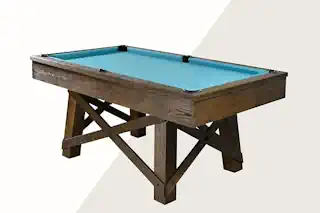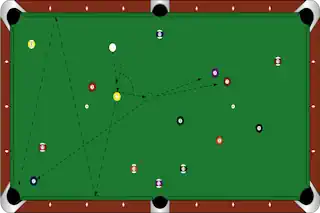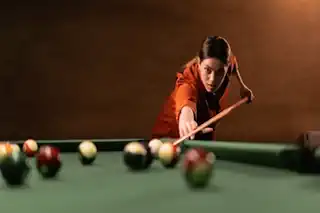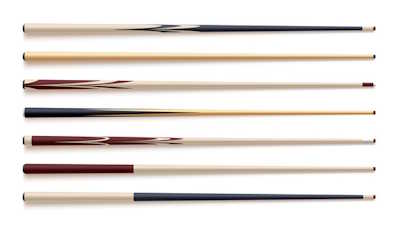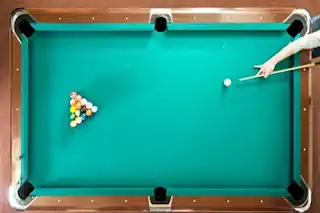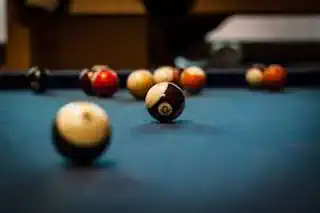The Amazing History of Pool: How This Thrilling Game Began a Millennia Ago
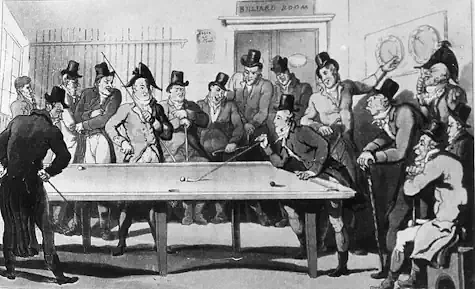
Pool is an amazingly strategic and thrilling game that has been enjoyed by sports enthusiasts for centuries. If you’re an experienced, billiards table player, a proud owner of a pool table, or just someone who is interested in getting to know this exciting sport, you’ll undoubtedly enjoy learning about the history of pool. Knowing the origins of this game will allow you to appreciate it even more. So, without further ado, let’s get started!
Early Origins: A Journey Through Time
The origins of pool can be traced back to ancient civilizations, where various cue sports were played in different forms. The first recorded instances of people playing billiards or pool-like games date back to ancient Greece and Egypt, where games involving sticks and balls were common. These early games were played outdoors on grass, much like modern-day croquet.
Different Ways Pool Was Played from the Early Origins Through the 14th Century
Ancient Greece and Egypt: Played with sticks and balls, these early versions of pool were similar to croquet and were enjoyed on grassy fields.
Early Medieval Europe: Known as “ground billiards,” these games were played on the lawns of French and British nobility, using rudimentary cues and balls. I was a noble game only at this time.
Late Medieval Period: Transitioned to indoor venues with tables covered in green cloth to mimic grass, making year-round play possible. The beginning of the indoor billiard table.
14th Century France: Introduced the concept of pockets by incorporating target areas on the table, adding a new layer of strategy and skill to the game.
14th Century England: Developed a form of billiards where players would aim to hit balls into archways and holes, further refining the gameplay mechanics.
As time marched on, these games evolved and spread across different cultures. By the late Middle Ages, a form of billiards was being played indoors on a table covered with green cloth, resembling a more outdoor lawn game. This adaptation allowed the game to be enjoyed year-round, regardless of weather conditions.
Evolution of Pool: From the 15th to 19th Century
The game of pool, as we know it today, began to take shape in 15th-century Europe. Initially popular among nobility, pool quickly gained traction across various social classes. During this period, the game saw significant innovations, including the introduction of the first cue ball and stick, which replaced the mace—a wooden stick used to push the balls.
Ways Pool Was Played from the 15th to 19th Century
15th Century France: The game started to be standardized, with the use of the cue stick becoming more common. Tables were often ornate and played mostly by the elite.
16th Century England: Billiards halls became centers of social activity, and rules became more refined. Various cue games, including billiards and snooker, started to emerge.
17th Century France: The introduction of leather cue tips revolutionized gameplay by providing greater control over the ball. The tables evolved to include cushions made from stuffed fabric.
18th Century Europe: The addition of slate beds and rubber cushions made tables more durable and provided a more consistent playing surface.
19th Century America: Pool tables became widespread in saloons, and various versions of pocket billiards were developed. The game became integral to American social culture, with the establishment of the first billiard clubs.
By the 17th century, the first game of billiards had established a set of rules and became more structured. The term “billiards” was coined from the French word “billart,” meaning “mace,” or “bille,” meaning “ball.” The game continued to evolve, with new variations emerging, such as carom billiards (played without pockets) and pocket billiards (pool).
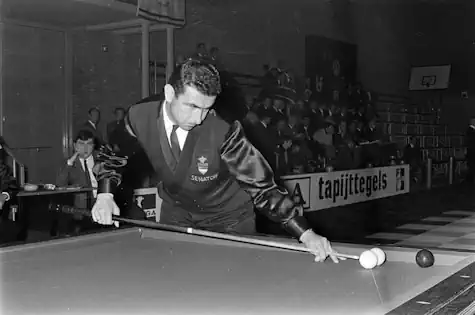
In the 19th century, pool gained widespread popularity in the United States. The Industrial Revolution led to the mass production of pool tables, making the game accessible to a broader audience. Tournaments and leagues began to form, further solidifying pool’s status as a competitive sport.
Through these centuries, pool continued to innovate and grow, becoming not only a popular pastime but also a beloved social activity across different nations and cultures.
The Modern Pool: Standardization and Global Popularity
The late 19th and early 20th centuries saw the standardization of pool rules, particularly in the United States. The Billiard Congress of America (BCA) was founded in 1948, establishing official rules and promoting the sport nationwide. This period also witnessed the first professional pool player and rise of iconic pool players, such as Willie Mosconi and Minnesota Fats, who became household names.
Ways Pool Has Changed in the 19th, 20th, and 21st Centuries
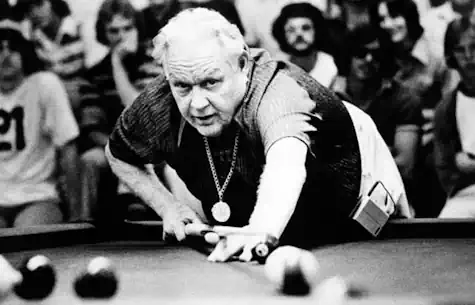
19th Century:
Mass Production of Tables: The Industrial Revolution allowed for the mass production of affordable pool tables, making the game accessible to a broader audience.
Establishment of Clubs and Tournaments: The formation of billiard clubs and leagues created a structured environment for competition and social interaction.
Introduction of New Variants: Various forms of pool, such as eight-ball and nine-ball, were developed and gained popularity in different regions.
20th Century:
Standardization of Rules: National and international organizations, like the Billiard Congress of America (BCA), were established to standardize the rules of pool.
Rise of Iconic Players: Legendary players like Willie Mosconi and Minnesota Fats brought widespread attention and fame to the sport.
Technological Advancements: The use of new materials, such as synthetic cue tips and modern rubber cushions, improved gameplay and equipment.
21st Century:
Global Tournaments: The globalization of pool has led to the establishment of international tournaments, attracting players from around the world.
Digital and Online Integration: The advent of digital technology has brought online pool games and virtual tournaments, expanding the game’s reach even further.
Increased Diversity: The sport has seen growing diversity among its players, with increased participation from women and various cultural backgrounds.
Pool’s global appeal continued to grow, with international competitions drawing players from around the world. The advent of television further popularized the game, bringing high-stakes matches into living rooms and inspiring a new generation of professional players.
Pool’s Cultural Impact: A Game in the Spotlight
Pool has left an indelible mark on popular culture, appearing in numerous films, literature, and works of art. Iconic movies like “The Hustler” (1961) and “The Color of Money” (1986) showcased the drama and excitement of pool, while also highlighting the skill and strategy required to excel in the game.
In literature, pool has been featured in countless stories, symbolizing everything from leisure and camaraderie to competition and conflict. Artists have also captured the essence of pool in their works, often depicting the game’s rich social atmosphere and the intensity of a closely fought match.
Conclusion: The Enduring Allure of Pool
From its ancient origins to its modern-day prominence, pool has evolved into a game that continues to captivate enthusiasts worldwide. Its rich history, strategic depth, and cultural significance make it a timeless pastime enjoyed by people of all ages and backgrounds.
Frequently Asked Questions (FAQ)
What is the origin of pool?
Pool originated from ancient civilizations like Greece and Egypt, where games involving sticks and balls were played outdoors. These early forms of the game evolved over time and eventually were played indoors on tables covered with green cloth, much like those used in pool rooms today.
How did pool evolve in Europe?
In 15th-century Europe, pool became popular among nobility and later spread to various social classes. Significant innovations such as the introduction of the cue stick occurred during this period. The game continued to evolve with the formation of structured rules and the development of new variations like carom billiards and pocket billiards tables.
When did pool become popular in the United States?
Pool gained widespread popularity in the United States during the 19th century, particularly due to the Industrial Revolution’s mass production of pool tables. Tournaments and leagues formed, cementing pool’s status as a competitive sport.
What role did the Billiard Congress of America (BCA) play in pool’s history?
Founded in 1948, the Billiard Congress of America (BCA) established official rules for pool in the United States and actively promoted the sport nationwide. The BCA helped standardize the game and contributed to its growing popularity.
Who are some iconic pool players?
Some legendary pool players include Willie Mosconi and Minnesota Fats, who rose to fame in the mid-20th century. Their exceptional skills and captivating personalities helped bring the game into the public eye. Along with them came professional players, the pool shark or pool hustler, and a variety of games played.
How has pool influenced popular culture?
Pool has been featured prominently in films, literature, and art. Iconic movies such as “The Hustler” and “The Color of Money” have highlighted the game’s drama and skill, while literature and art have captured its social and competitive aspects.
Why does pool continue to be so popular today?
Pool remains popular due to its rich history, strategic depth, and cultural significance. It is a game that appeals to players of all ages and backgrounds, providing both competitive and recreational enjoyment.
When did pool tables and billiard tables become mainstream?
Pool and billiard tables became mainstream during the 19th century as a result of the Industrial Revolution. The capability for mass production made these tables more affordable and accessible to a broader audience, transforming them from rarities found only in exclusive clubs into common fixtures in bars, recreation centers, and homes. This period also saw the rise of billiard and pool halls, and clubs, further embedding the game into social life.
